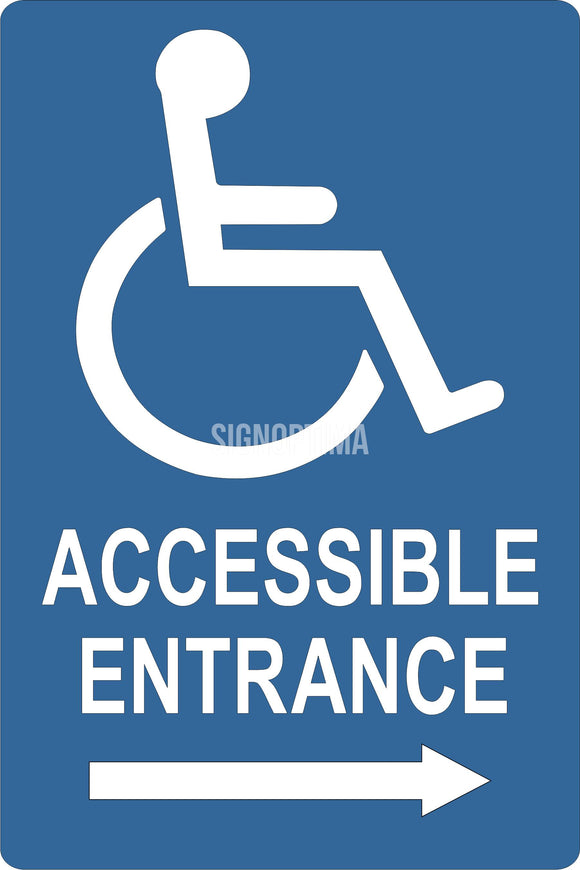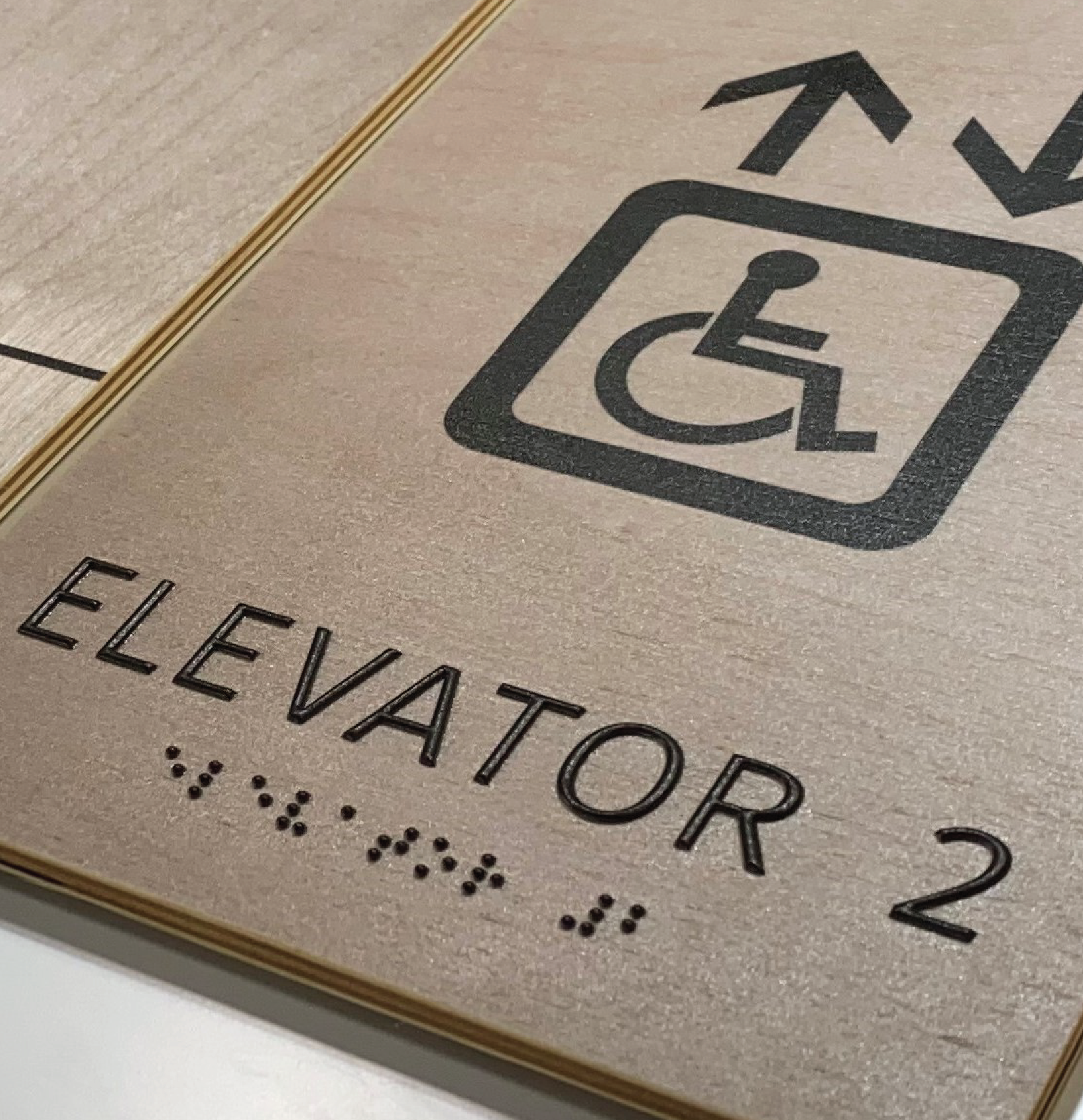Exploring the Secret Attributes of ADA Indicators for Boosted Accessibility
In the world of access, ADA indications function as quiet yet effective allies, ensuring that spaces are comprehensive and navigable for individuals with impairments. By integrating Braille and responsive elements, these signs damage obstacles for the visually impaired, while high-contrast color design and clear fonts satisfy varied visual requirements. Their strategic positioning is not arbitrary yet rather a calculated initiative to assist in seamless navigation. Yet, past these functions lies a much deeper narrative about the development of inclusivity and the ongoing commitment to developing equitable spaces. What more could these indicators represent in our search of universal availability?
Relevance of ADA Compliance
Making certain conformity with the Americans with Disabilities Act (ADA) is crucial for promoting inclusivity and equivalent accessibility in public spaces and work environments. The ADA, enacted in 1990, mandates that all public facilities, companies, and transport solutions suit individuals with specials needs, guaranteeing they enjoy the same rights and possibilities as others. Conformity with ADA standards not only satisfies legal obligations but likewise boosts a company's credibility by showing its commitment to variety and inclusivity.
One of the vital aspects of ADA compliance is the application of obtainable signs. ADA indications are made to ensure that individuals with impairments can easily browse via structures and areas. These signs must stick to particular guidelines relating to dimension, typeface, shade comparison, and placement to guarantee exposure and readability for all. Correctly executed ADA signage aids eliminate barriers that individuals with disabilities frequently experience, thereby advertising their freedom and self-confidence (ADA Signs).
Moreover, sticking to ADA laws can alleviate the danger of legal repercussions and prospective penalties. Organizations that stop working to adhere to ADA guidelines might deal with charges or lawsuits, which can be both monetarily troublesome and damaging to their public photo. Therefore, ADA compliance is important to promoting an equitable setting for everybody.
Braille and Tactile Components
The incorporation of Braille and responsive elements into ADA signage embodies the principles of accessibility and inclusivity. These functions are important for individuals that are aesthetically impaired or blind, allowing them to navigate public areas with greater self-reliance and self-confidence. Braille, a responsive writing system, is essential in supplying written info in a style that can be easily regarded through touch. It is normally positioned beneath the equivalent text on signs to make sure that people can access the information without aesthetic help.
Tactile aspects prolong beyond Braille and include raised symbols and personalities. These components are developed to be noticeable by touch, enabling individuals to determine room numbers, washrooms, exits, and other important locations. The ADA establishes certain standards pertaining to the size, spacing, and placement of these tactile aspects to enhance readability and ensure consistency across various settings.

High-Contrast Color Design
High-contrast shade systems play an essential function in boosting the visibility and readability of ADA signs for people with aesthetic disabilities. These plans are necessary as they make the most of the difference in light reflectance between message and history, guaranteeing that indications are easily noticeable, even from a distance. The Americans with Disabilities Act (ADA) mandates using certain color contrasts to fit those with limited vision, making it an essential facet of compliance.
The effectiveness of click for more high-contrast shades hinges on their capability to stick out in numerous lighting problems, consisting of poorly lit atmospheres and areas with glare. Generally, dark message on a light background or light text on a dark background is used to achieve ideal comparison. Black message on a white or yellow history gives a raw visual distinction that aids in quick recognition and comprehension.

Legible Fonts and Text Dimension
When taking into consideration the layout of ADA signage, the choice of understandable fonts and appropriate message dimension can not be overstated. These aspects are critical for guaranteeing that indications are available to people with visual impairments. The Americans with Disabilities Act (ADA) mandates that fonts have to be not italic and sans-serif, oblique, manuscript, very attractive, or of uncommon kind. These requirements assist make sure that the message is quickly understandable from a distance which the personalities are appreciable to varied audiences.
The size of the message likewise plays an essential function in access. According to ADA standards, the minimal text height should be 5/8 inch, and it should increase proportionally with viewing range. This is particularly essential in public spaces where signage needs to be reviewed swiftly and precisely. Consistency in message size contributes to a cohesive aesthetic experience, helping people in navigating settings effectively.
Additionally, spacing between lines and letters is essential to readability. Sufficient spacing stops characters from showing up crowded, enhancing readability. By sticking to these standards, developers can dramatically enhance ease of access, making certain that signage serves its desired objective for all people, regardless of their visual capacities.
Effective Positioning Methods
Strategic placement of ADA signage is essential for maximizing access and making certain conformity with lawful requirements. ADA guidelines stipulate that indicators need to be placed at an elevation between 48 to 60 inches from the ground to ensure they are within the line of view for both standing and seated individuals.
Additionally, signs have to be put adjacent to the lock side of doors to allow very easy identification prior to entrance. Uniformity in indication placement throughout a facility boosts predictability, lowering confusion and enhancing general user experience.

Conclusion
ADA signs play an essential role in advertising accessibility by incorporating attributes that address the demands of individuals with specials needs. These components jointly foster an inclusive setting, highlighting the significance of ADA conformity in guaranteeing equivalent accessibility for all.
In the realm of ease of access, ADA signs offer as quiet yet powerful allies, making sure that spaces are navigable and inclusive for individuals with handicaps. The ADA, established in 1990, mandates that all public centers, employers, and transport solutions suit individuals with disabilities, guaranteeing they delight in the very same legal rights and chances as others. ADA Signs. ADA indicators are made to make certain that individuals with handicaps can easily navigate through structures and spaces. ADA standards specify that signs should be installed at an elevation between 48 to 60 inches from the ground to guarantee they are within the line of sight for both standing and seated people.ADA indications play a crucial function in promoting ease of access by incorporating functions that resolve the needs of redirected here people with impairments